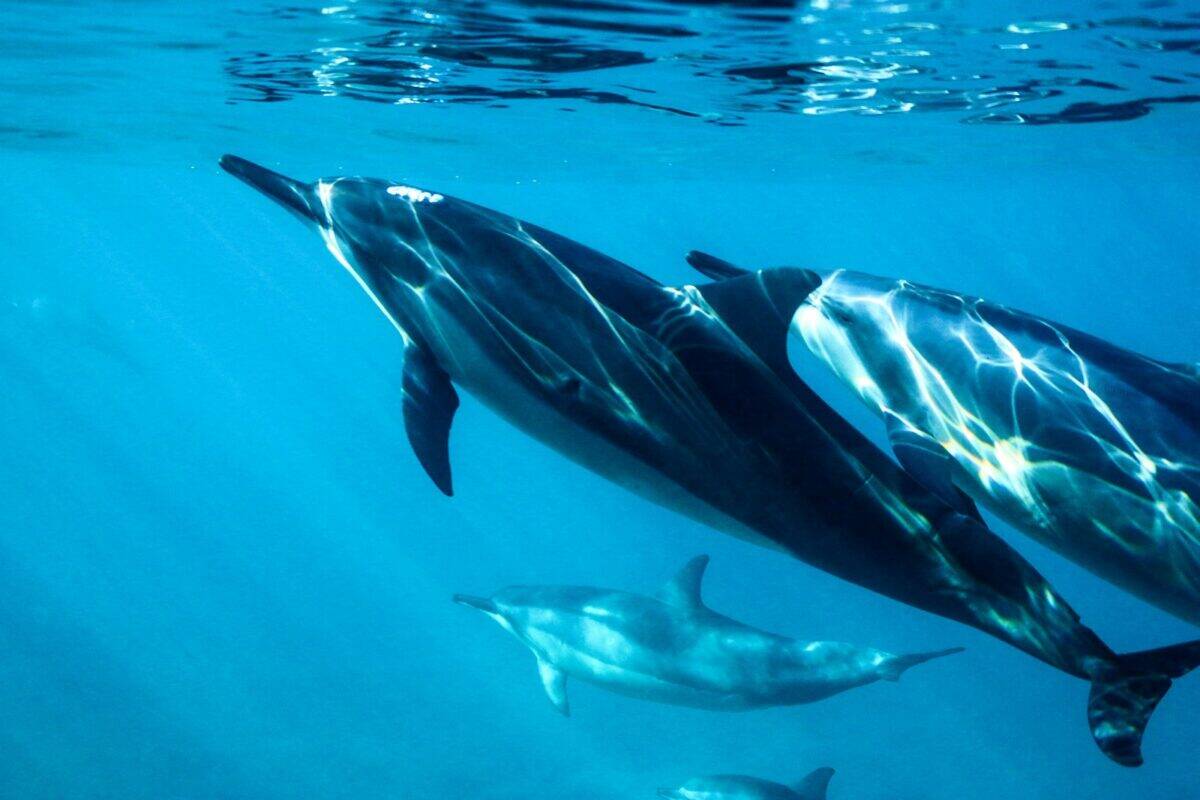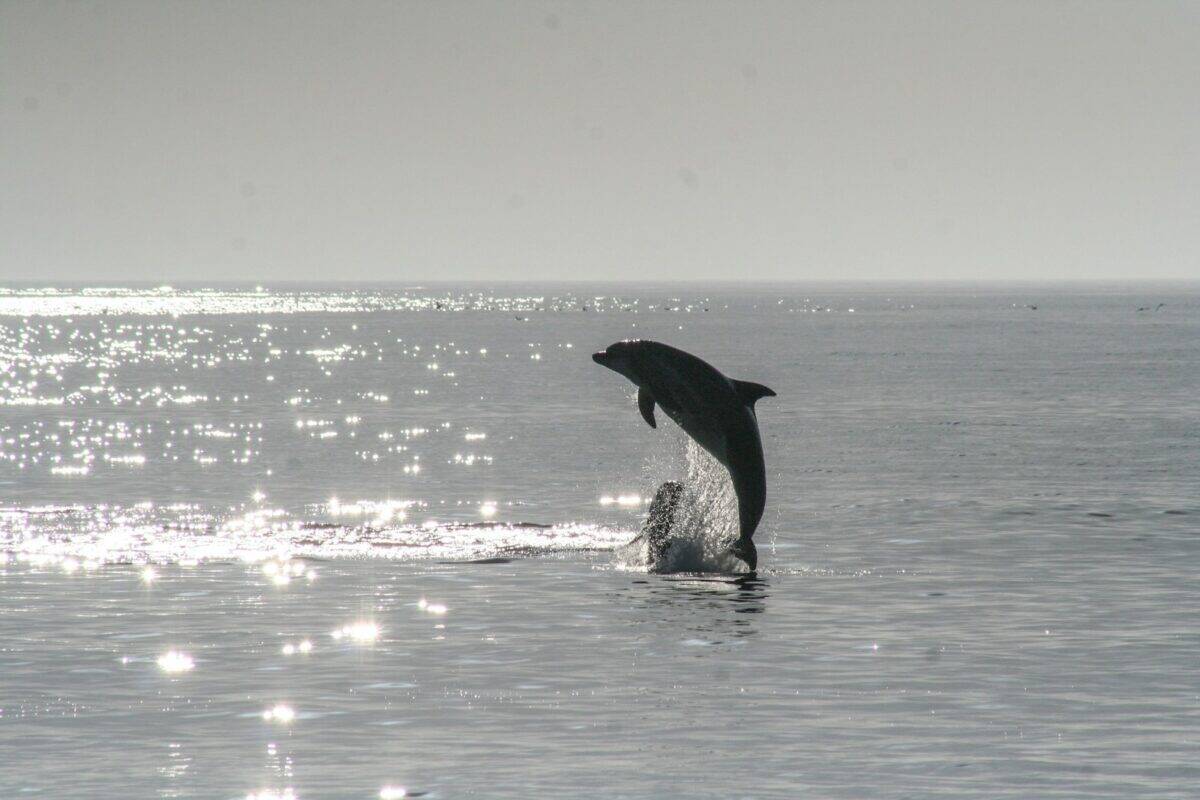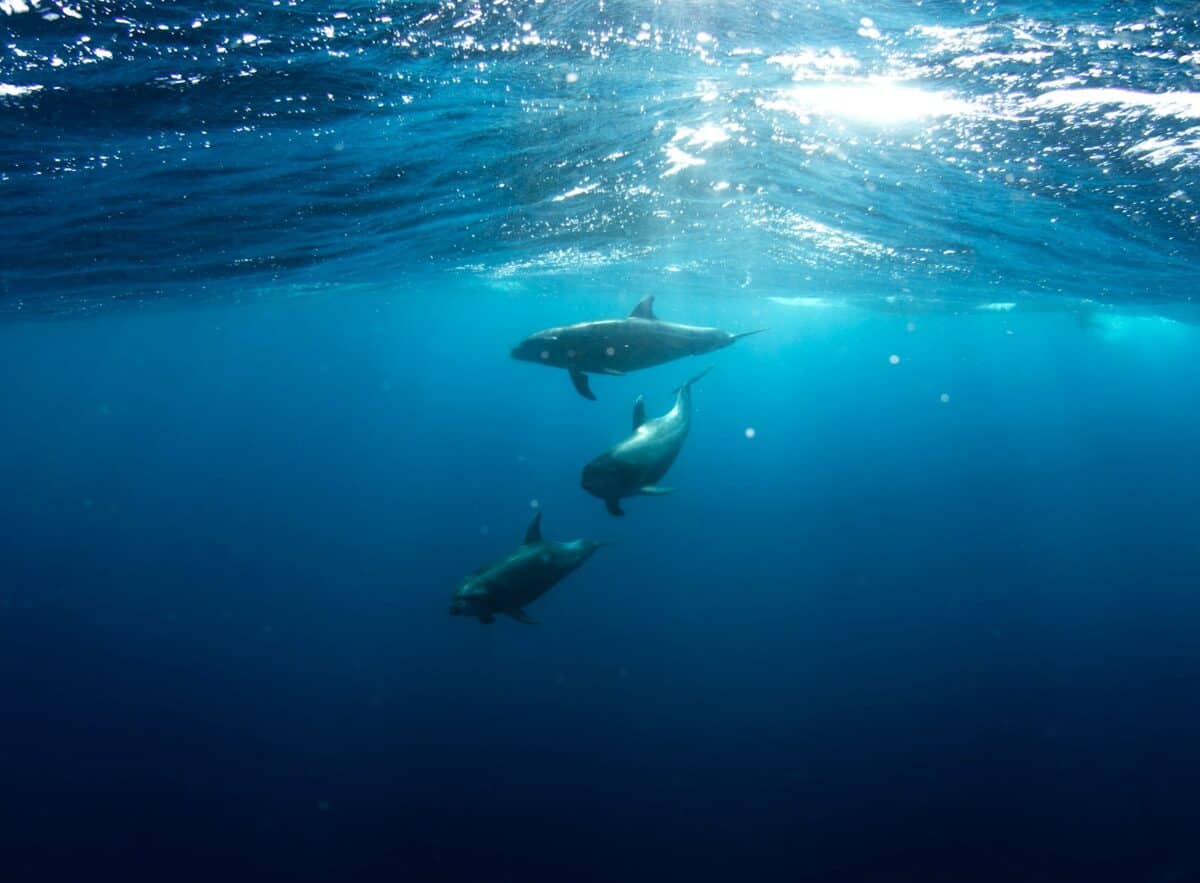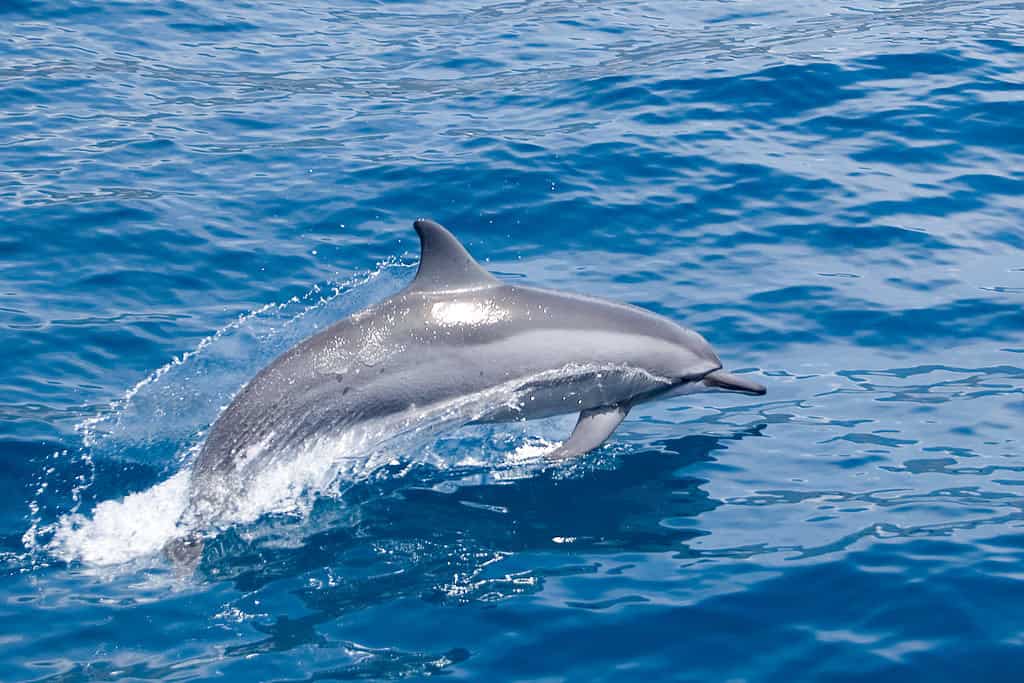There’s something magical about witnessing dolphins in their natural habitat—the way they glide effortlessly through the water, leap into the air with seemingly boundless joy, and interact with their pod members. For many nature enthusiasts, spotting wild dolphins ranks high on their wildlife bucket list. Unlike viewing these intelligent marine mammals in captivity, encountering dolphins in the wild offers a genuine glimpse into their natural behaviors, social structures, and the ecosystems they inhabit. This comprehensive guide will equip beginners with the knowledge, tools, and techniques needed to maximize their chances of spotting dolphins while fostering responsible wildlife observation practices that protect these remarkable creatures for generations to come.
Understanding Dolphin Species and Their Habitats

Before embarking on your dolphin-watching adventure, it’s crucial to understand which species you might encounter in different regions. The dolphin family (Delphinidae) includes over 40 species distributed throughout the world’s oceans and some rivers. The bottlenose dolphin (Tursiops truncatus) is perhaps the most recognizable and widely distributed, inhabiting temperate and tropical waters worldwide.
Other commonly spotted species include the common dolphin (Delphinus delphis), spinner dolphin (Stenella longirostris), and orca or killer whale (Orcinus orca), which is actually the largest member of the dolphin family. Some species, like the Amazon river dolphin (Inia geoffrensis), inhabit freshwater ecosystems. Each species has unique physical characteristics, behavioral patterns, and habitat preferences, so researching which dolphins frequent your destination will enhance your spotting experience.
Prime Locations for Dolphin Watching

While dolphins inhabit waters worldwide, certain locations offer particularly reliable sightings. In North America, the coastal waters of Florida, California, Hawaii, and the Gulf of Mexico provide excellent viewing opportunities. The Azores, Canary Islands, and Scottish Highlands are European hotspots. Australia’s Monkey Mia and New Zealand’s Bay of Islands are renowned for their resident dolphin populations.
For those seeking more exotic encounters, the waters surrounding the Maldives, Costa Rica, and South Africa harbor diverse dolphin species. When selecting a destination, consider the time of year, as dolphin movements often follow seasonal patterns tied to food availability, breeding cycles, and water temperatures. Local marine conservation organizations or wildlife tourism offices can provide up-to-date information on recent sightings and optimal viewing times.
Best Times of Day for Dolphin Spotting

Timing can significantly impact your dolphin-watching success. Many dolphin species are most active during early morning and late afternoon hours, making these prime times for observation. During these periods, dolphins often engage in feeding behaviors, which bring them closer to the surface and increase visibility. The midday hours, while generally less active, can still yield sightings, particularly in areas with resident populations.
Weather conditions also influence dolphin behavior—calm seas with minimal wind make spotting easier as the water surface remains undisturbed. Additionally, tidal movements affect dolphin activity in coastal areas, with many species moving with the tides to access feeding grounds. Local guides can provide invaluable insights into the daily patterns of local dolphin populations, helping you schedule your excursion for optimal viewing.
Essential Equipment for Dolphin Watching

While dolphins can sometimes be spotted from shore with the naked eye, having the right equipment enhances the experience. Binoculars with 7x to 10x magnification are essential for distance viewing, with marine-specific models offering waterproof protection and enhanced stability for boat-based viewing. A quality camera with a zoom lens (at least 200mm) allows you to capture memorable moments without disturbing the animals.
If photographing from a moving boat, consider a camera with image stabilization and a fast shutter speed to compensate for movement. Polarized sunglasses reduce glare from the water’s surface, making it easier to spot dolphins swimming just below. Don’t forget practical items like sunscreen, a hat, water-resistant clothing, and non-slip footwear if you’re on a boat. A field guide to marine mammals can help you identify different species and understand their behaviors.
Signs and Behaviors: How to Spot Dolphins

Spotting wild dolphins requires knowing what to look for on the water’s surface. The telltale dorsal fin cutting through the water is often the first sign, though this can be confused with sharks in some areas. Unlike sharks, dolphins typically surface to breathe every few minutes, creating a small splash or “blow” as they exhale. Look for circular ripples on calm water, indicating where a dolphin has just submerged.
Dolphins frequently travel in groups (pods), so spotting one often means others are nearby. Scan for birds diving into the water, as dolphins and seabirds often feed on the same fish schools. In clear waters, you might notice shadows moving beneath the surface or flashes of light as sunlight reflects off their bodies. With practice, you’ll develop a “search image” that helps you quickly distinguish dolphin movements from waves and other marine life.
Common Dolphin Behaviors to Watch For

Understanding dolphin behavior enriches the watching experience and helps predict where and when you might spot them. Feeding behaviors vary by species and prey type—some dolphins work cooperatively to herd fish, while others “strand feed” by pushing fish onto shorelines. Dolphins are playful by nature, often engaging in aerial behaviors like leaping, tail-slapping, and “spy-hopping” (rising vertically to peek above the water).
You might witness social interactions within the pod, including synchronized swimming, physical contact, and communicative vocalizations. Some dolphins ride the bow waves created by boats or the wakes of larger marine animals like whales—a behavior that demonstrates their playful intelligence and energy efficiency. Young calves stay close to their mothers, occasionally practicing hunting techniques or engaging in play. Recognizing these behaviors not only improves your spotting abilities but deepens your appreciation for these complex marine mammals.
Boat-Based vs. Land-Based Dolphin Watching

Both boat-based and land-based dolphin watching offer unique advantages. Boat excursions bring you closer to offshore dolphin habitats and provide opportunities to observe natural behaviors away from coastal areas. Dedicated dolphin-watching tours employ experienced guides who know local hotspots and can recognize subtle signs of dolphin presence. However, boats can potentially disturb dolphin natural behaviors if not operated responsibly.
Land-based viewing, from coastal cliffs, piers, or beaches, offers a non-intrusive alternative that allows dolphins to behave naturally without human interference. This approach works best in areas where dolphins regularly come close to shore, such as certain bays, estuaries, or coastal feeding grounds. For beginners, combining both approaches provides a comprehensive experience—start with a guided boat tour to learn identification techniques, then try your hand at land-based spotting using your new knowledge.
Responsible Dolphin Watching Practices

Ethical wildlife observation should always prioritize the animals’ welfare. When viewing dolphins from boats, maintain a respectful distance (guidelines typically recommend at least 50-100 meters) and never approach directly from the front or behind, which can disturb their movement patterns. If dolphins approach your vessel voluntarily, maintain a steady speed and direction to avoid confusing or startling them. Never feed wild dolphins, as this alters natural behaviors and can lead to dependency or illness.
Choose tour operators who follow local wildlife viewing regulations and demonstrate respect for marine ecosystems. When watching from land, use viewing platforms where available to minimize coastal habitat disruption. Stay quiet to avoid startling dolphins and never attempt to swim with or touch wild dolphins unless in a regulated program specifically permitted for controlled human-dolphin interactions. By practicing responsible observation, you contribute to sustainable wildlife tourism that benefits both dolphins and coastal communities.
Understanding Dolphin Communication and Social Structure

Dolphins possess one of the animal kingdom’s most sophisticated communication systems, using a complex combination of vocalizations, body language, and tactile interactions. Their acoustic repertoire includes clicks (used primarily for echolocation), whistles (signature calls that function like names), and burst-pulse sounds (for social interactions). During your dolphin watching, you might hear these vocalizations if you’re close enough or if your tour boat has an underwater microphone (hydrophone).
Dolphins live in dynamic social groups, with pod structures varying by species. Some form tight-knit family units, while others maintain looser “fission-fusion” societies where membership changes regularly. Within these groups, dolphins establish intricate relationships, with strong bonds between mothers and calves lasting several years. Recognizing these social dynamics adds depth to your observations, transforming a simple sighting into a window into their complex social world.
Differentiating Dolphins from Other Marine Life

For beginners, distinguishing dolphins from other marine creatures can be challenging, particularly at a distance. Unlike sharks, whose dorsal fins remain relatively static as they swim, dolphin dorsal fins typically appear and disappear in a rolling motion as they surface to breathe. Dolphins also tend to surface more frequently than sharks. Porpoises, close relatives of dolphins, have smaller, more triangular dorsal fins and rounder bodies than most dolphin species.
Some seal and sea lion species might be confused with dolphins when only partially visible, but their movement patterns differ significantly—they swim with undulating vertical movements rather than the horizontal tail movements of dolphins. Various whale species may also be mistaken for larger dolphins. Pay attention to the animal’s size, surfacing pattern, and whether they travel in groups. With practice and patience, you’ll develop the ability to quickly identify dolphins among other marine inhabitants.
Recording and Sharing Your Dolphin Encounters

Documenting your dolphin sightings serves both personal enjoyment and scientific value. Maintain a wildlife journal recording the date, time, location, species (if known), number of individuals, and observed behaviors. Photographs, particularly those capturing distinctive markings, can help researchers identify individual dolphins and track their movements. Many coastal regions have citizen science programs where wildlife enthusiasts can submit their dolphin observations to contribute to conservation research.
Mobile apps like Dolphin & Whale 911, Happy Whale, and OceanEye allow users to log sightings and connect with research projects. When photographing dolphins, prioritize natural lighting conditions and be prepared to adjust settings quickly as dolphins often surface briefly. Share your experiences responsibly on social media, providing educational context rather than just location information that might lead to site overcrowding. Your careful documentation can foster appreciation for these marine mammals while providing valuable data for their protection.
Common Challenges and How to Overcome Them

Dolphin watching presents several challenges for beginners. Weather conditions can drastically affect visibility—choppy seas make spotting dorsal fins difficult, while glare on sunny days obscures underwater movement. Combat these issues by choosing days with calm sea conditions when possible and using polarized sunglasses to reduce glare. Seasickness can derail boat-based watching experiences; consider taking motion sickness medication before departing and focusing on the horizon rather than looking down at the water continuously.
Many beginners experience “sighting fatigue,” where constant scanning of the water becomes tiring. Take regular eye breaks by looking at distant land features, and switch between using binoculars and naked-eye observation. Dolphin watching also requires patience—sometimes hours may pass without sightings, even in dolphin-rich areas. Manage expectations by viewing each excursion as an opportunity to connect with the marine environment as a whole, appreciating other wildlife and natural beauty while waiting for dolphins to appear.
Conclusion: Embracing the Wonder of Wild Dolphins

Spotting dolphins in their natural environment creates a profound connection between humans and the marine world, offering glimpses into the complex lives of these intelligent, social creatures. As you develop your dolphin-watching skills, remember that each sighting is a privilege—a moment when wild animals allow us a brief window into their world. The patience and knowledge you cultivate through dolphin watching extends beyond this specific activity, enhancing your ability to observe and appreciate all wildlife.
By practicing responsible viewing techniques, you become part of the conservation solution, helping ensure that future generations can experience the same wonder of watching a dolphin leap through the waves or curious eyes meet yours across the water’s surface. Let your dolphin-watching journey be guided by respect, curiosity, and the understanding that the most meaningful wildlife encounters are those that leave the animals undisturbed, continuing their natural lives in healthy oceans.
- How Sloths Help Support Mini-Ecosystems in Their Fur - August 9, 2025
- Eagles vs. Snakes: Who Would Win? - August 9, 2025
- Why Pandas Were Once Nearly Extinct—and How China Saved Them - August 9, 2025

